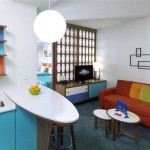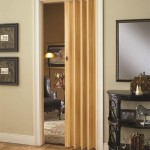```html
Interior Design Paint Ideas: Transforming Spaces with Color
The selection of paint colors for interior spaces is a crucial aspect of interior design. Color profoundly influences mood, perception, and the overall ambiance of a room. Strategic paint choices can enhance architectural features, create visual illusions of space, and personalize the environment to reflect the occupants' preferences. This article explores key considerations and popular trends in interior design paint ideas, providing a comprehensive overview for homeowners, designers, and anyone seeking to revitalize their living spaces.
Understanding Color Psychology and its Application
Color psychology examines the effects of different colors on human emotions and behavior. This understanding is fundamental when selecting paint colors for different rooms. For example, cooler colors like blues and greens are often associated with tranquility and calmness, making them suitable for bedrooms and bathrooms. These hues can create a sense of serenity and relaxation. Conversely, warmer colors such as reds and yellows evoke energy and excitement. They are frequently employed in living rooms, dining rooms, and kitchens, where a more vibrant and stimulating atmosphere is desired.
Neutral colors, including whites, grays, and beiges, offer versatility and adaptability. They provide a blank canvas that allows furniture and accessories to take center stage. Neutral palettes can also make smaller spaces appear larger and brighter. When using neutrals, consider incorporating texture through different paint finishes or accent walls to add visual interest. Within the spectrum of neutral shades, there are warm and cool undertones that are important to consider. For example, a gray with a warm undertone will lean towards greige or beige, creating a cozier feel, while a gray with a cool undertone will appear more crisp and modern.
The impact of color extends beyond emotional responses. It can also affect the perceived size and shape of a room. Dark colors tend to make a space feel smaller and more intimate, while light colors create an illusion of spaciousness. Vertical stripes can visually heighten a room, while horizontal stripes can make it appear wider. Careful consideration of these visual effects is essential for maximizing the potential of any interior space. The existing architecture and natural light sources should also be taken into account when making color selections to ensure the color interacts favorably with the existing environment.
Exploring Popular Paint Color Trends
Interior paint color trends evolve consistently, reflecting changes in design aesthetics and cultural influences. Staying informed about these trends can provide inspiration and guidance when selecting paint colors. Current trends often lean towards nature-inspired palettes, incorporating earthy tones, soft greens, and muted blues. These colors promote a sense of connection to the outdoors and create a calming and inviting atmosphere.
Another popular trend is the use of bold accent colors. Instead of painting an entire room in a vibrant hue, consider using it sparingly on a single wall, in alcoves, or on architectural details. This approach adds visual interest without overwhelming the space. Jewel tones, such as emerald green, sapphire blue, and ruby red, can be particularly effective as accent colors, adding a touch of luxury and sophistication. Deeper, saturated colors are making a comeback, often used in dining rooms or home offices to create a sense of depth and focus.
The resurgence of classic colors is also noteworthy. Timeless shades like off-white, light gray, and navy blue remain popular choices for their versatility and enduring appeal. These colors can be adapted to various design styles, from traditional to contemporary, and provide a solid foundation on which to build a cohesive interior design scheme. The key to using classic colors effectively is to incorporate them with modern accents and accessories to prevent the space from feeling dated or stale.
Selecting the Right Paint Finish
The paint finish is as significant as the color itself. Different finishes offer varying levels of sheen, durability, and suitability for specific applications. Matte finishes, for example, have a low sheen and are ideal for hiding imperfections on walls and ceilings. They create a soft, velvety look but are less durable and more difficult to clean. Matte finishes are best suited for low-traffic areas such as bedrooms and formal living rooms.
Eggshell finishes offer a slightly higher sheen than matte and are more durable and easier to clean. They are a good choice for living rooms, dining rooms, and hallways, where moderate traffic and occasional cleaning are expected. Satin finishes are even more durable and washable, making them suitable for kitchens, bathrooms, and children's rooms. The subtle sheen adds a touch of elegance while providing resistance to moisture and stains.
Semi-gloss and gloss finishes have the highest sheen levels and are the most durable and easiest to clean. They are commonly used on trim, doors, and cabinets, where frequent cleaning and resistance to wear and tear are essential. However, high-gloss finishes can be reflective and may highlight imperfections on walls. When selecting a paint finish, consider the room's function, the level of traffic, and the desired aesthetic. It is also important to prepare the surfaces properly before painting to ensure a smooth and even finish.
Beyond the standard finishes, specialty paints can also be used to add unique textures and effects to walls. These include faux finishes, such as sponging, rag rolling, and stenciling, which can create a sense of depth and dimension. Chalkboard paint allows you to transform a wall into a writable surface, ideal for kitchens, playrooms, or home offices. Magnetic paint can be used to create a magnetic surface for displaying notes, photos, or artwork. These specialty paints offer creative possibilities for customizing your interior spaces and adding a personal touch.
Ultimately, the selection of paint colors and finishes is a highly personal process. Consider your individual preferences, lifestyle, and the overall design goals for your home when making your choices. Experimenting with color swatches and paint samples is highly recommended before committing to a particular color scheme. Observing how the colors appear in different lighting conditions and at different times of day will help ensure that you are satisfied with the final result. Consultation with a professional interior designer or color consultant can also provide valuable guidance and insight.
```
50 Living Room Paint Ideas Art And Design Colors House Interior Color Schemes

Enhance Your Interiors With These Creative Painting Ideas Residential Interior Design From Dkor

51 Modern And Fresh Interiors Showcasing Gray Paint

Interior Paint Ideas Colors Trends Architectural Digest

Dare To Be Diffe With Unique Interior Design Ideas

2024 Interior Design Ideas To Inspire Your Diy Project Crown Paints

Interior Painting Ideas For Your Design Style Decker Service Professionals

Rustic Paint Colors Ideas For Your Home Designcafe

50 Popular Living Room Colors Paint Ideas

Wall Art Painting Designs And Ideas Attractive Shades Patterns Decoration I Peinture Interieur Maison Murale Géométrique Idée








